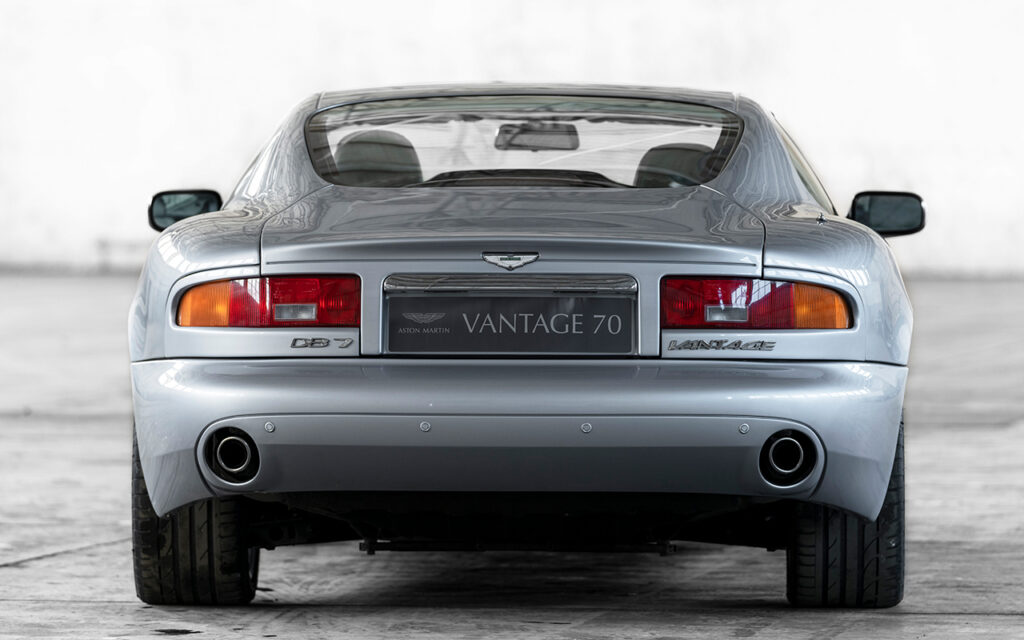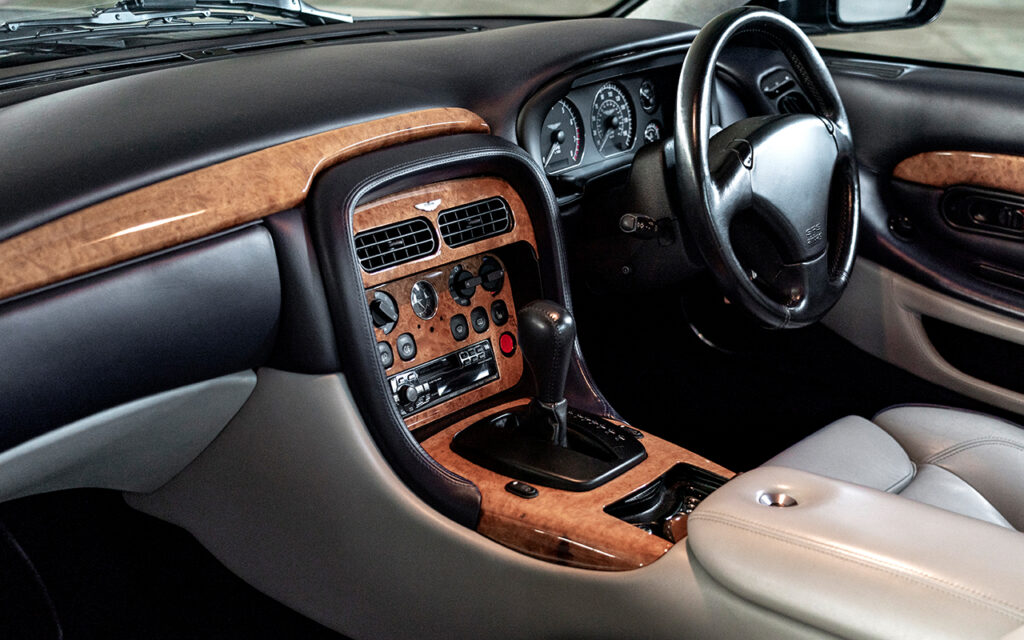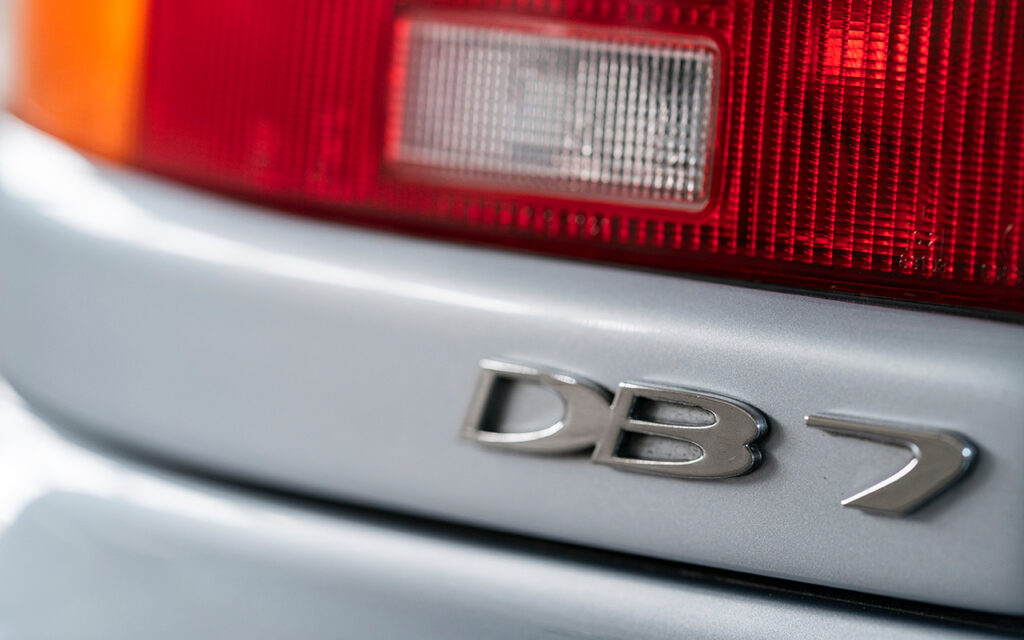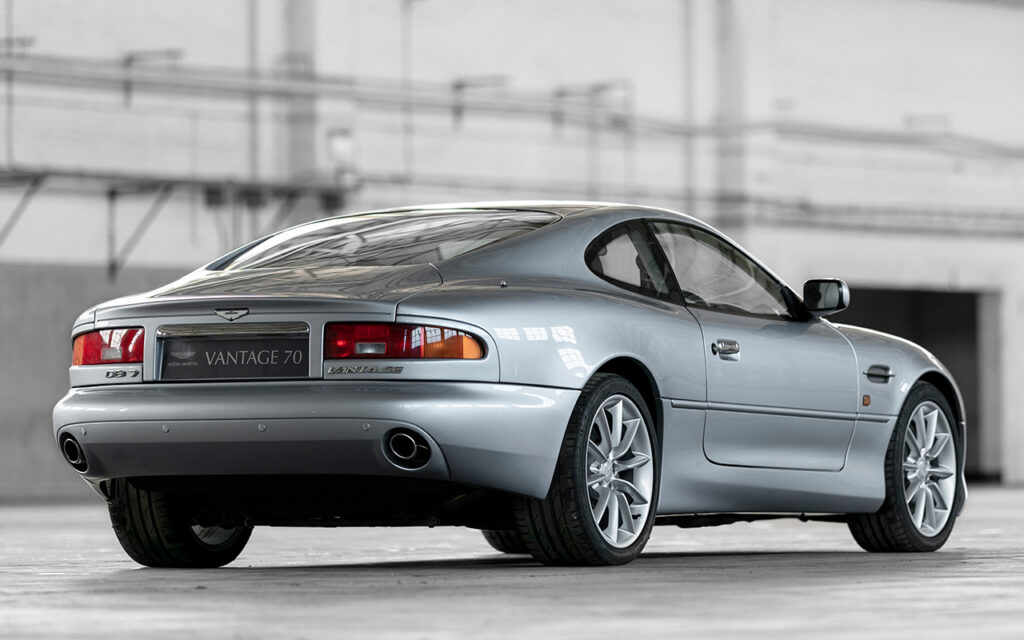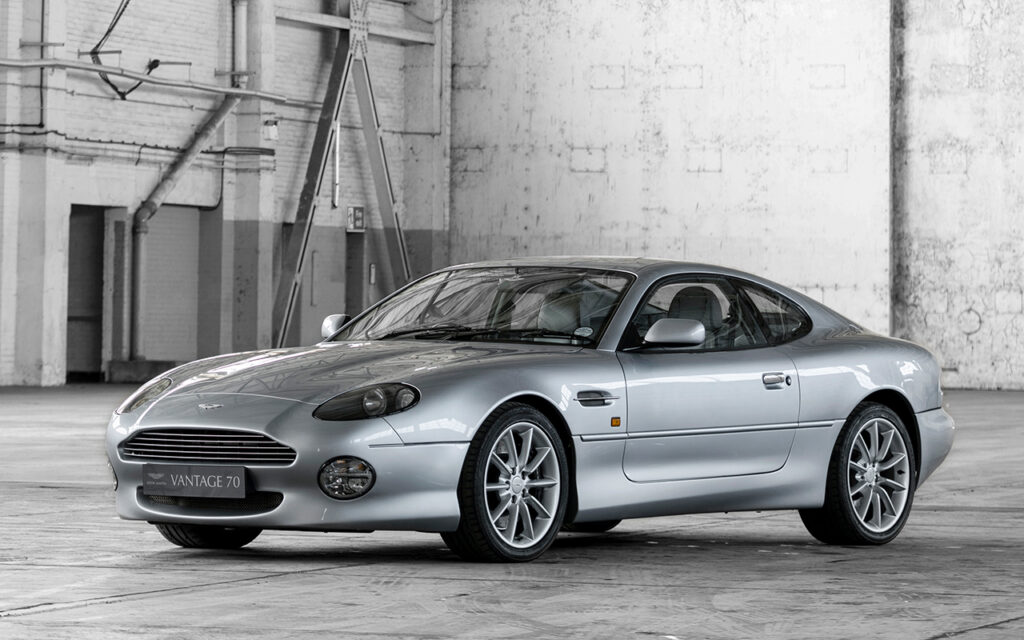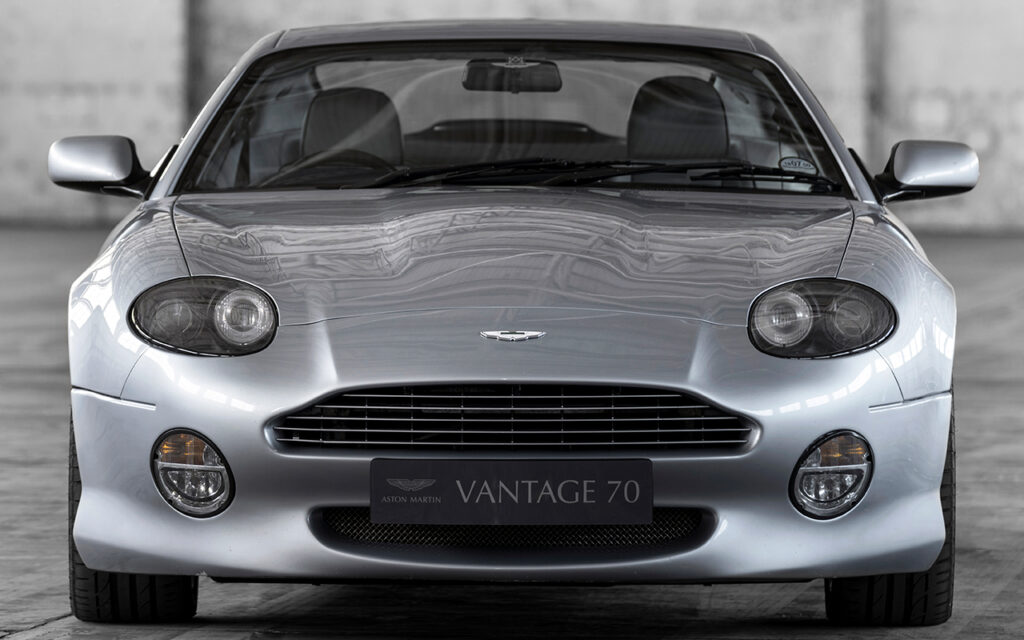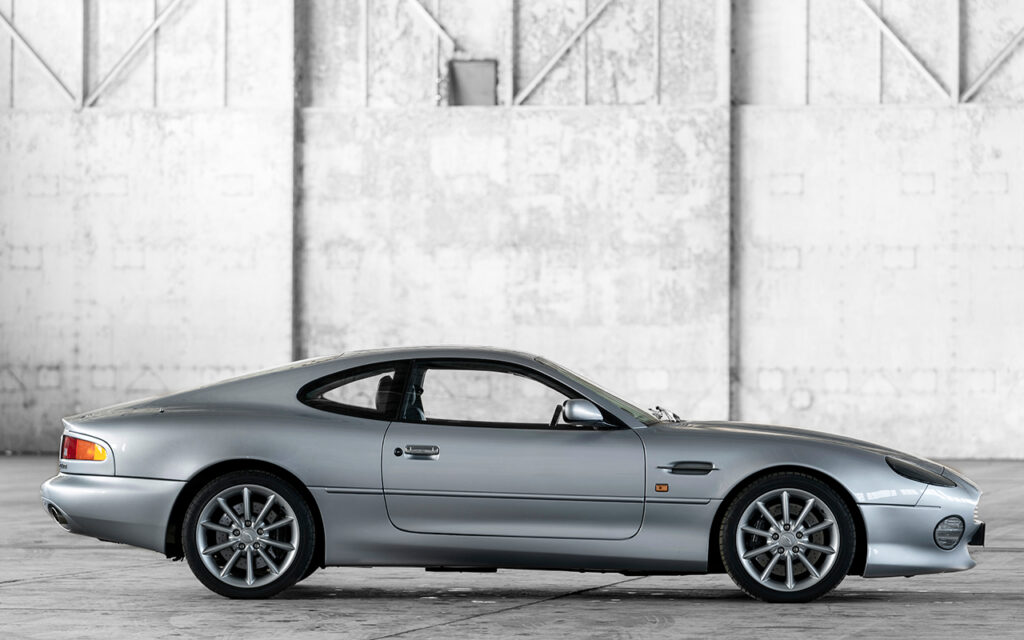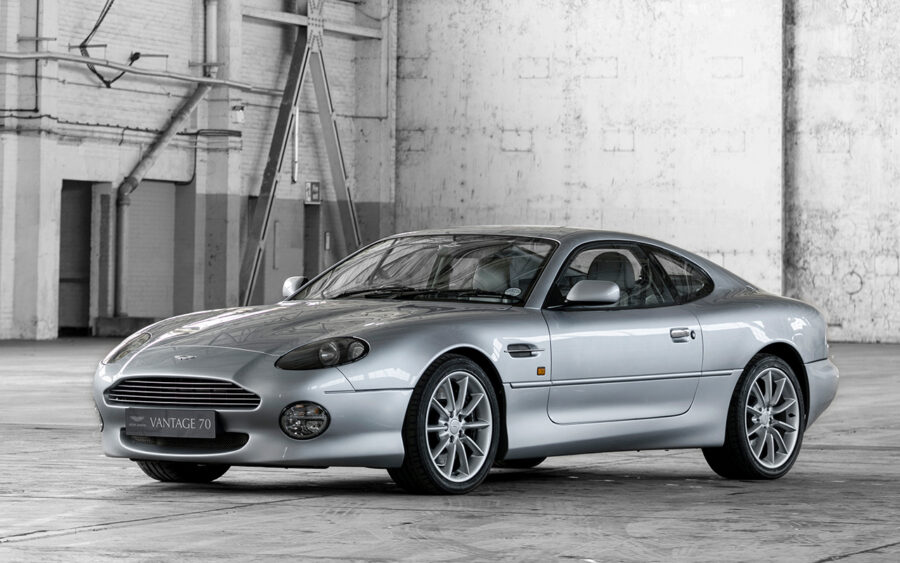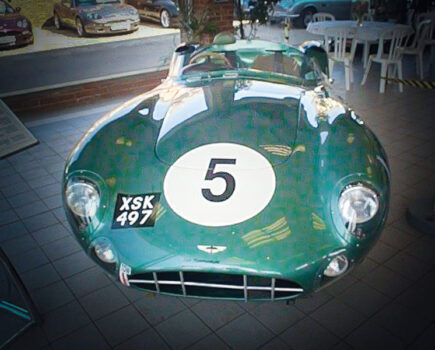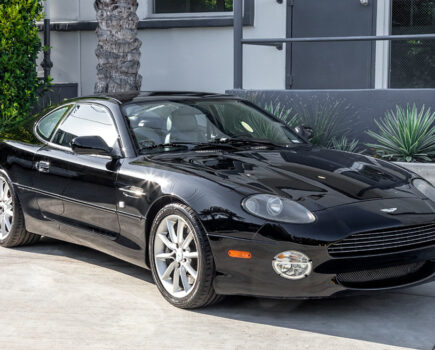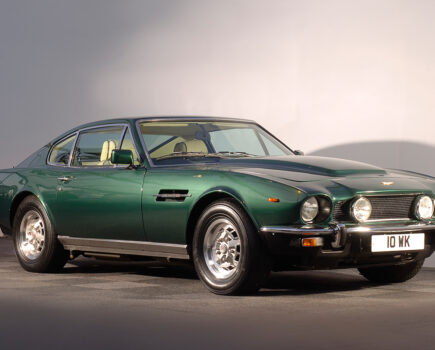The Aston Martin DB7’s handsome styling had a lot to do with its success – and status as the car that saved the brand
Words: Jon Burgess
The DB7 nameplate existed well before the DB7 itself; two different cars in the David Brown era nearly wore them: the 1967’s DBS, which in fact got its name from a Touring concept car, and 1969’s DB6 Mark II, which was not deemed different enough from earlier DB6s to warrant a new moniker.
It was long understood within the company that a more affordable car was needed; as Aston lurched from buyout to buyout (it had passed through the hands of David Brown, Company Developments and Aston Martin Lagonda (1975) before the 70s were out) with the oil crisis crippling sales of expensive luxury cars, a more accessible model would be beneficial to cash flow.
The trouble was, it never had to money to develop such a vehicle – the closest it got to an entry-level car was the short-lived 1972-1973 AM Vantage, a six-cylinder counterpart to the recently launched (and ferociously expensive) DBS V8.
By 1981, however, things were changing. A new chairman, Victor Gauntlett, was put in charge of the firm after a consortium acquired the company for around $3.5 million. At the same time, work was proceeding, tentatively, on the first iteration of Aston’s volume seller, called Project DP1999.
A year earlier, Jaguar had started work on a modern successor to the XJS, the so-called ‘F-type.’ Known as XJ41/42 within the company, work proceeded alongside the extensively delayed successor to the XJ6 Series III, the XJ40. The XJ41/42, in coupé and cabriolet form, would have complimented the new XJ6 well.
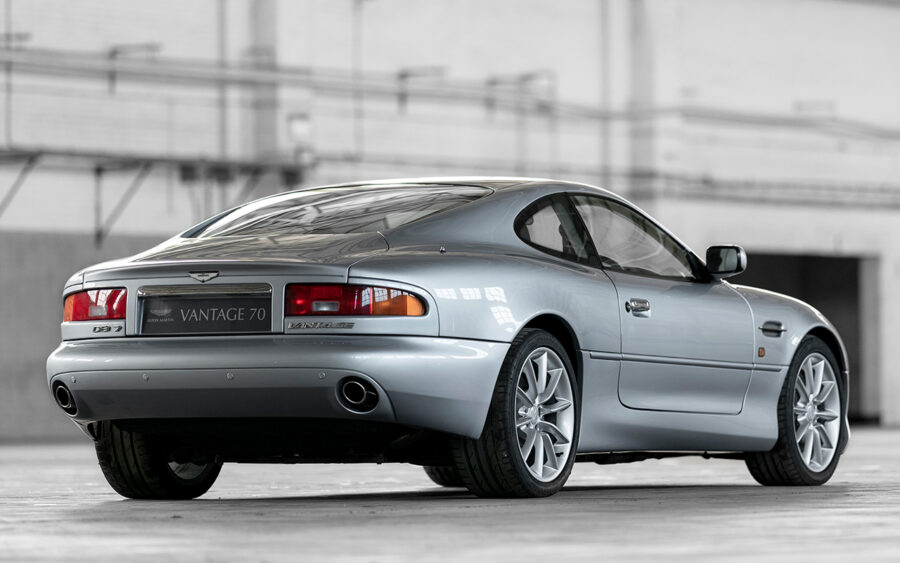
Alas, we know how its story ends; after a lengthy and protracted development, in which all-wheel-drive running gear and twin turbo installations were completed, Jaguar’s then-owner, Ford, axed the programme, owing to its complexity and lack of projected returns once on sale. Like Aston’s radical, electronically-controlled V8 Lagonda programme, XJ41/42’s development had cost Jaguar a fortune, and Ford, now in charge of the coffers had had enough. The ‘F-type’ was dead by 1989, and never lived to see the Nineties in which it was to be unveiled.
That said, the work completed on XJ41/42 proved useful. Two years earlier, Ford had also taken majority control of Aston Martin; an undisclosed sum purchased 75 per cent of the company’s shares. For the first time in its history, Aston had access to finances and testing facilities beyond its wildest dreams.
In the wake of XJ41/42, whose documents had since been passed to Aston by 1991, Ford commissioned ‘Project XX’, a simplified sports car programme that would replace the ageing XJS and give Aston a platform with which to develop a new car.
At Aston’s end, ‘Project XX’ had morphed into ‘NPX, or Newport Pagnell EXperimental’. Although still XJS based, it gave Aston a head start; after testing regimens more thorough than any other Aston to date, a deal was concluded with Tom Walkinshaw Racing in Bloxham, Oxfordshire. Not only would Ian Callum’s TWR Design shape NPX into a modern Aston, but TWR itself were to produce it, too.
Prototypes wowed crowds at the 1993 Geneva Motor Show, but it would be another year before the DB7 would begin production. Production budgets meant that an all-new engine was out of the question; instead, a hand-built, modified version of Jaguar’s 3.2-litre AJ6, with Aston Martin valve covers, powered the new car. With Newport Pagnell still producing the Marek V8-powered Virage and Vantage, a six was a good fit for an entry-level Aston; unlike the ill-fated AM Vantage, however, the car it powered was a distinct model in its own right, rather than a pared down DBS pushed out of the door in a desperate attempt to accrue funds.
Sadly, the Moray Callum-penned Lagonda Vignale didn’t go into production alongside the DB7, but its mooted V12, though not in the car as displayed, was optioned for future development.
In 1994, other British manufacturers were toying with entry level machines, too; the Bentley Java concept, based heavily on BMW hardware, previewed a disastrous and short-lived union with the German car maker; neither lived long into the Noughties.
Two years later, as Detroit and Los Angeles audiences took in the DB7 Volante, work was continuing on what become Aston’s first road car V12 – the Cosworth developed SGA. A working prototype appeared in Ford’s Indigo concept vehicle, and development work to squeeze under the bonnet of a DB7 was afoot.
By the end of 2000, the six-pot DB7s were going away – but the DB7 Vantage and Vantage Volante, now with that 6.0-litre SGA V12 up front, took the DB7 into the 21st century. Subsequent variations on the DB7 V12 brought buyers the limited-run DB7 Zagato, the last-of-the-line DB7 GT and GTA, with even more power than previously, and the AR1, the last of the breed.
With more than 7000 examples produced, the DB7 made way for the DB9 at Aston Martin’s production facility in Gaydon, Warwickshire. It may have divided opinion among the Aston faithful, but it paved the way for a new generation of cars.
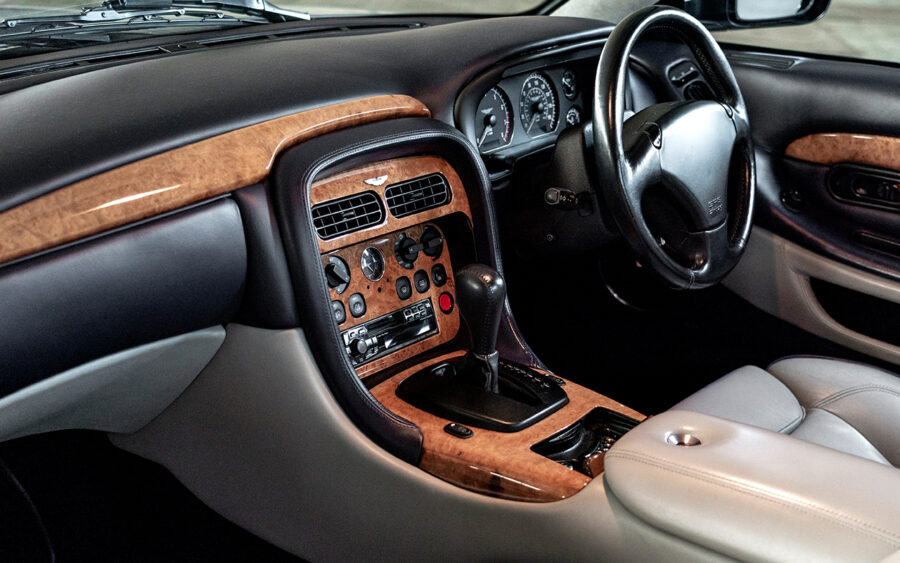
Aston Martin DB7 timeline
1980
Jaguar’s new ‘F-type,’ known as XJ41/42, begins development, as work on the new XJ40 (XJ6) continues.
1981
Proposals for a ‘baby’ Aston are discussed within the company. Work on Project DP1999 starts as Aston gets a new chairman, Victor Gauntlett after a consortium of investors buys the firm for approximately $3.5 million.
1987
Ford acquires 75 per cent of Aston Martin shares for an undisclosed sum, giving the 400-employee firm access to its testing and financial facilities.
1989
Jaguar is bought by Ford; this time the sums are declared (£1.6 billion). Ford deems Jaguar’s XJ41/42 programme too costly and shelves it – but passes its documents to Aston Martin. ‘Project XX’, an extensive XJ-S based update to replace the ageing model, begins.
1991
‘Project XX’ evolves in two directions, one at Aston Martin (NPX, for Newport Pagnell EXperimental) and the other at Jaguar, which is heavily reworked into the X100 programme, resulting in the XK8 of 1996.
Walter Hayes takes over as Aston chairman.
1993
Having set up a new assembly facility with TWR in Bloxham, Oxfordshire, Aston Martin reveals its new car, the DB7, at that year’s Geneva Motor Show.
Moray Callum-styled Lagonda Vignale also debuts at Geneva; plans to produce it at Bloxham come to nothing. The V12 that would have powered the production cars does survive, however.
1994
DB7 production begins at Bloxham while Ford displays a mock-up of the V12 engine Aston mooted for the Lagonda Vignale (the show car used a Lincoln V8).
1996
DB7 Volante launched at Detroit and Los Angeles, key shows for an important export market. Ford shows off a working version of its SGA V12 in its wild Indigo concept roadster.
1999
DB7 Vantage and Vantage Volante, now SGA V12 powered, debuts at the London Motor Show. Ford’s Premier Automotive Group is formed, comprising Aston Martin, Jaguar, Land Rover and Volvo, alongside Lincoln, Mercury, and Mazda.
2000
The six-cylinder DB7 is discontinued and the line at Bloxham winds down.
2002
Current chairman, Ulrich Bez, receives a proposal from Zagato to produce a modified DB7.
The DB7 GT is announced at the Birmingham Motor Show.
2003
The DB7 Zagato sells out before production begins; the DB7 AR1 is announced; DB7 Vantage production concludes
2004
Aston, its headquarters and production facilities now in Gaydon, Warwickshire, complete a factory refit in readiness for the DB9; as this takes place, the final DB AR1 is completed, formally ending production of the DB7.
